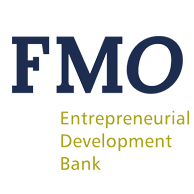

India’s Micro, Small and Medium Enterprises (MSMEs) account for over 80% of the country’s industrial enterprises, and at least 50% of them are located in rural areas of low-income states.
In general, these MSMEs operate in an informal economy that is characterized by two paradoxes. On the one hand, the MSMEs generate the most jobs but offer little job security, and on the other, while the sector has entrepreneurial potential, it lacks access to capital and timely financing, and is unable to leverage technology to make progress. The result is that this large sector of India’s economy is not growing on a par with its peers worldwide, nor is it able to realize its potential in the domestic market.
In 2013 FMO invested INR 300 million from the Dutch government fund MASSIF, in Vistaar Financial services Private Ltd. In 2018 this investment was repaid to FMO. The Vistaar investment was primarily for its on-lending program, but also included two Capacity Development projects: (1) migration to a more robust IT platform and (2) psychometric testing of clients to better understand their risk preferences, intention to repay and likelihood of defaulting.
During this time frame, Vistaar shifted its strategy and moved away from smaller, uncollateralized Hypothecation Loans (HL) to larger, collateralized Mortgage Loans (ML) that are usually long-term.
This was in line with changes in the market, as Micro-Finance Institutions and Small Finance Banks were funding the clients -- mainly micro-enterprises in rural regions—served by the HL. Vistaar’s move towards ML clients meant it could assist the financially underserved SME sector that sits between the productive poor (served by Microfinance Institutions -MFIs- and Small Finance Banks -SFBs-), and the medium and large businesses supported by banks.
The Indian government’s decision to demonetize in 2016 also prompted Vistaar’s new direction, as it had a negative effect on the dairy industry, one of Vistaar’s mainstay sectors. This important pivot demonstrated that Vistaar had an acute understanding of its market and a determination to learn from mistakes made by other players in the past.
FMO engaged research center LEAD at Krea University to study the effects of its investment of INR 300 million to Vistaar Financial Services Private Ltd, made in 2013, based on six metrics: Relevance, Additionality, Catalytic effects, Demonstration effects, Effectiveness and Effects at end user level.
Vistaar was relevant to the MASSIF investment strategy in 2013 for the following reasons:
Vistaar used MASSIF’s funding for on-lending to underserved groups, which qualifies as financial additionality. Furthermore, Vistaar’s use of MASSIF funding in two capacity projects meant that it was able to improve its Environmental & Social Risk Assessment capacity and management systems, which demonstrated Environmental, Social, Governance (ESG) additionality.
The catalytic and demonstration effects were harder to causally evaluate, but interviews with Vistaar’s management revealed that the FMO name on its borrowing portfolio provided a major comfort factor when Vistaar sought further funding.
The MASSIF loan has been demonstrably effective, as during the two-year period following FMO's investment, Vistaar expanded its presence to nine new states and its client base grew by 457%.
The study revealed noted positive changes at household level in terms of greater disposable income.
The study revealed encouraging results for Vistaar’s clients. They reported an increase in revenue and number of employees, as well as business assets and inventory. They also noted positive changes at household level in terms of greater disposable income, leading to increased use of insurance and savings plans, as well as personal investment in health and education.
The study made the following recommendations for Vistaar:
Recommendations to FMO included taking a pro-active lead in lending to women-owned businesses, which FMO is currently doing through its gender finance strategy. FMO is also continuing to invest in product development as part of Capacity Development as per other recommendations from the study.